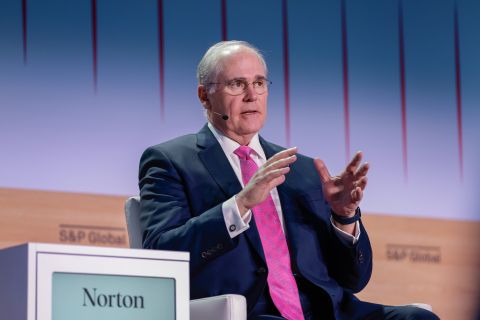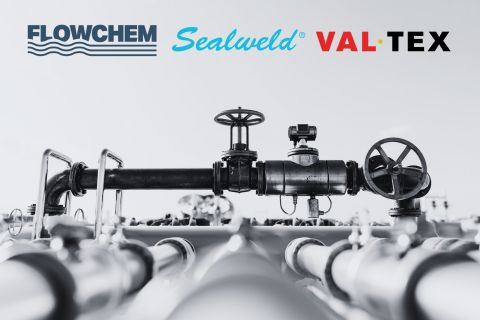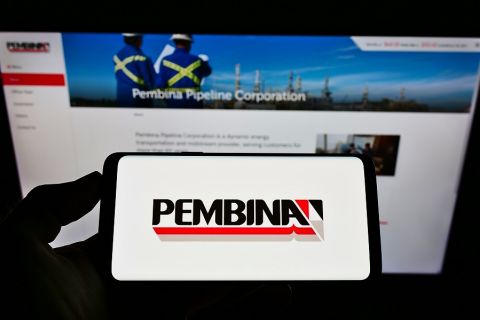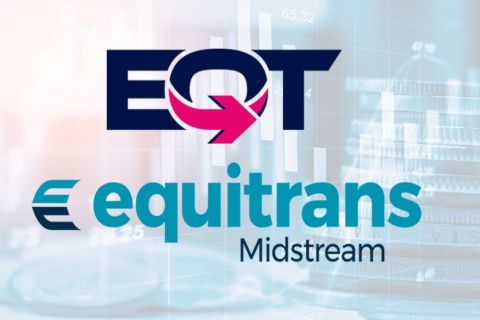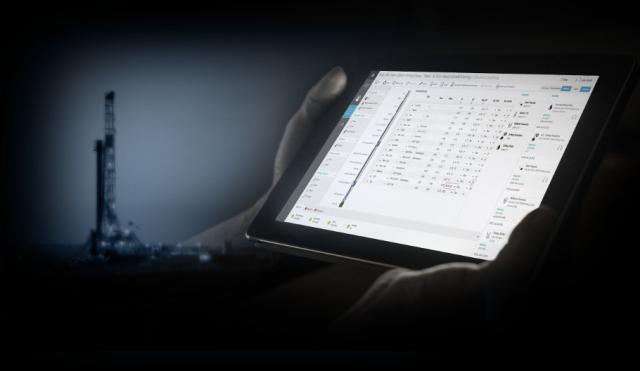
Schlumberger said the DrillPlan solution offers a radical new way of working that will deliver quicker and better-quality drilling programs through the automation of repetitive tasks and validation of end-to-end workflows. (Source: Schlumberger)
Collaboration is at the core of the Schlumberger (NYSE: SLB) digital efforts with one of its latest technology offerings bringing together diverse domains as the company reaches out to customers and partners to improve efficiency.
Technology has deep roots for the oilfield service company with its digital arm, Software Integrated Solutions (SIS), having been part of the company for 35 years to provide commercial software, information management and IT infrastructure across the entire E&P lifecycle.
However, as the worldwide digital revolution picks up pace, oil and gas players—once known for their slowness to embrace technological change—are showing interest in potential transformative technologies such as artificial intelligence, the industrial Internet of Things, predictive and prescriptive analytics and Big Data, looking for ways to transform newfound knowledge into growth.
Schlumberger approaches its thinking and development not from a specific technology-driven angle. Instead, “We look at it in terms of ‘How do we add value for our customers? How do we make them more competitive? How do we make their businesses more sustainable?’” Gavin Rennick, president of SIS, told Hart Energy during a recent phone interview.
Incorporating expertise in various parts of the E&P space, Rennick said the company focuses on how it can make companies and individual users more efficient and productive. In steps collaboration, integration and optimization—the unofficial buzzwords of an industry clawing its way back from a profit-gobbling downturn—and another digital solution is born.
Schlumberger introduced its DELFI cognitive E&P environment, which the company said leverages digital technologies such as security, analytics and machine learning, high-performance computing and the Internet of Things to improve operational efficiency and deliver optimized production, in September during the SIS Global Forum in Paris. Schlumberger also released DrillPlan digital well construction planning solution that the company said is the first step in the DELFI cognitive E&P environment.
Developed with a focus on enhanced user collaboration and providing a new way of working for drilling teams, Schlumberger said DrillPlan solution enables operators and service companies to have access to all data and science needed in a single, common system.
Following the SIS Global Forum in Paris, Rennick spoke to Hart Energy about the new releases, technology, next steps and more. DrillPlan solution and DELFI environment are two examples of how the company is using technology to improve collaboration both within companies and in the industry.
Collaboration With DrillPlan, DELFI
“There are many, many workflows across E&P where a digital approach makes a tremendous amount of sense,” Rennick said, pointing out the abundance of data and the desire of users to collaboratively use data more effectively to improve workflow. In well construction, processes typically involve handling emails, files and Excel spreadsheets. The software puts information into a “single canvas where multiple users can collaborate and use data in a more effectively.”
DELFI environment came in response to the need for a unified environment, to connect people, processes and technologies to maximize value.
“The industry response has been phenomenal,” Rennick said, pointing out interest from IOCs, national oil companies and independents. Schlumberger plans to evolve the technology into other parts of the E&P lifecycle, including geoscience, field development planning and production. “We’ll have a phased approach, rolling out in different markets that make sense for different customer needs.”
The most common question Rennick said he gets from customers is whether they can participate in some part of that buildout.
Here are Rennick’s thoughts, which have been edited for clarity and length, on issues concerning digital technology and how it is reshaping the industry.
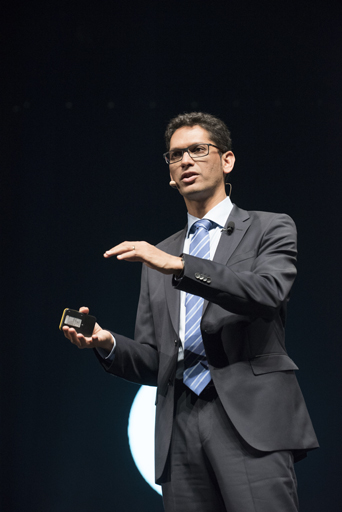
How do you ensure that data you’re using for your software and analytics is good data, that it’s accurate and being used for the right purpose—including third-party datasets that are used?
Rennick: It’s a really good question. Data is centric to everything done going forward; we want to be sure that customers have the right data and insights from that data delivered to the right user at the right time and in the right context. There are multiple places where quality is ensured in data.
We have a long history in oilfield measurements, so we understand how to ensure good data quality at the point of creation. In a digital world, at the point of ingestion—when you’re pulling data together—you must ask: Does this data make sense? Do we know that this geological data is good quality before it becomes a part of our model? And at the point where an application wants to use the data, we again check and say this data has been called for use in an application in a particular context. Does it make sense? Is this quality data?
We apply another layer of checking to ensure that we have the right quality of data in the context of how it’s about to be used. That happens dynamically. So there are multiple layers to ensure that there’s a robust system of checks in place.
What safeguards are in place to protect data in terms of cybersecurity?
Rennick: Obviously, that’s a big issue in every industry. The good thing is data security and confidentiality have been part of our DNA since inception. Clearly, there are very, very sophisticated ways of addressing cybersecurity in the world right now. We use a multilayered approach, working with leading cybersecurity companies. We have multilayered authentication and encryption of data, whether it’s stored or in motion and we have monitoring and control.
But we also have external companies working with us who are testing our systems. In 2015 we obtained SOC [Service Organization Controls] 2 Type II compliance, which is based on verification of your cybersecurity—the highest level of security the industry has right now. Cybersecurity is now and will forever be an ongoing area of focus for the company. We have a very comprehensive approach to it.
What is Schlumberger doing in the area of artificial intelligence (AI)?
Rennick: We’re looking at different applications of AI in different domains—from seismic interpretation to production surveillance, and we’re looking at how we can apply it to some of the data quality issues that we’ve already talked about. On top of that, we see that there are applications of AI in optimizing some of the very complex, cross-domain processes and systems that we experience in our industry. This will allow people to get to better answers more quickly.
With increased automation and software capable of making intelligent decisions, where does that leave oil and gas workers? How do you see roles evolving for the oilfield service industry over the next 10 to 20 years?
Rennick: Working in this industry is going to get more and more interesting and exciting as we progress. Not only are people going to have to connect in a different way to people around them to learn and engage but also with people in other intellectually challenging domains. They’re going to have a variety of tools and technologies that take away the mundane and repetitive tasks, freeing up valuable time.
They’re going to be able to use data analytic tools and AI tools to get answers to questions that’ll allow them to be more effective. I think they’re also going to become very, very skilled in the use of all of these technologies. We have invested a lot already [in the last two years] in retraining our population in the use of analytics, AI and other technologies specific to their domains.
In my organization geoscientists with decades of geoscience and geological experience are now proficient in AI and looking at using AI tools within their domain. I think this is fantastic because they’re harvesting everything they know using tools that will make their jobs more interesting.
Any final thoughts?
Rennick: Going forward our approach to product development will involve collaboration with our customers and our partners. When we launched the DELFI environment, I talked a lot about the fact that not only did it allow integration [with existing frameworks and platforms] and collaboration, it also allows openness and extensibility.
Our organization is trying to create an open environment for the industry to work together. That mindset and thinking about the way we go forward and drive value through collaboration and working together is something that is important for us.
I’d also like to stress how important it is that we look at the technologies we’ve talked about collectively rather than in isolation. Things like the cloud, machine learning and artificial intelligence are certainly exciting, but it’s only when you can bring them together and connect them to domain knowhow that they can have a big impact. Lastly, the rewards are great but the efforts to achieve them are not trivial. Through our own efforts inside Schlumberger we’ve learned that to truly transform the way you work demands that you address process and cultural change. We’ve developed these change competencies to such an extent that customers can count us on to help them deliver on the promise of digital, beyond just the technology.
Recommended Reading
ONEOK CEO: ‘Huge Competitive Advantage’ to Upping Permian NGL Capacity
2024-03-27 - ONEOK is getting deeper into refined products and adding new crude pipelines through an $18.8 billion acquisition of Magellan Midstream. But the Tulsa company aims to capitalize on NGL output growth with expansion projects in the Permian and Rockies.
SCF Acquires Flowchem, Val-Tex and Sealweld
2024-03-04 - Flowchem, Val-Tex and Sealweld were formerly part of Entegris Inc.
Enbridge Closes First Utility Transaction with Dominion for $6.6B
2024-03-07 - Enbridge’s purchase of The East Ohio Gas Co. from Dominion is part of $14 billion in M&A the companies announced in September.
Pembina Cleared to Buy Enbridge's Pipeline, NGL JV Interests for $2.2B
2024-03-19 - Pembina Pipeline received a no-action letter from the Canadian Competition Bureau, meaning that the government will not challenge the company’s acquisition of Enbridge’s interest in a joint venture with the Alliance Pipeline and Aux Sable NGL fractionation facilities.
EQT Deal to ‘Vertically Integrate’ Equitrans Faces Steep Challenges
2024-03-11 - EQT Corp. plans to acquire Equitrans Midstream with $5.5 billion equity, but will assume debt of $7.6 billion or more in the process, while likely facing intense regulatory scrutiny.


